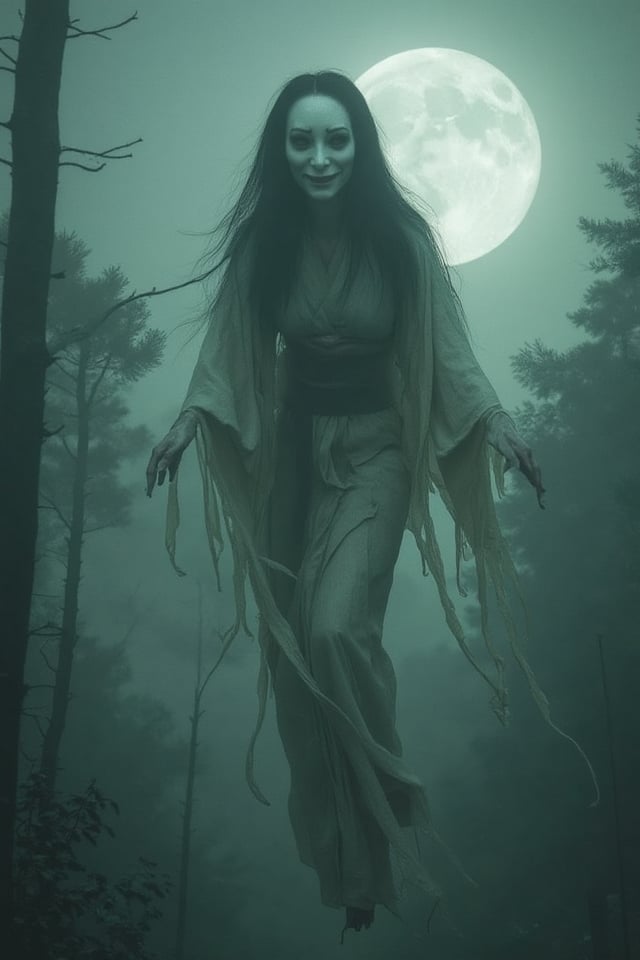Exploring DORA, LoRA, and LOKR: Key Insights Before Halloween2024 Training
In the world of artificial intelligence (AI), especially in training image-based models, the terms DORA, LoRA, and LOKR often play different but complementary roles in developing more efficient and accurate AI models. Each has a unique approach to understanding data, adapting models, and involving developers in the process. This article will discuss what DORA, LoRA, and LOKR are in the context of AI image training, as well as their respective strengths and weaknesses.1. DORA (Distributed Organization and Representation Architecture) in AI Image Training DORA is a model better known in the fields of cognitive science and AI, focusing on how systems understand and represent information. Although not commonly used directly in AI image training, DORA's principle of distributed representation can be applied to how models understand relationships between elements in an image—such as color, texture, shape, or objects—and how those elements are connected in a broader context.Strengths: Understanding complex relationships: DORA allows AI models to understand complex relationships between objects in an image, crucial for tasks such as object recognition or object detection.Strong generalization: Helps models learn more abstract representations from visual data, allowing for object recognition even with variations in form or context.Weaknesses: Less specific for certain visual tasks: DORA may be less optimal for tasks requiring high accuracy in image details, such as image segmentation.Computational complexity: Using a model based on complex representations like DORA requires more computational resources.2. LoRA (Low-Rank Adaptation) in AI Image Training LoRA is a method widely used in AI for fine-tuning large models without requiring significant resources. LoRA reduces model complexity by factoring heavy layers into low-rank representations. This allows for adjustments to large models (such as Vision Transformers or GANs) without retraining the entire model from scratch, saving time and cost.Strengths: Resource efficiency: LoRA enables faster and more efficient adaptation of models, especially when working with large models and smaller datasets.Reduces overfitting: Since only a small portion of the parameters are adjusted, the risk of overfitting is reduced, which is essential when working with limited image datasets.Pretrained model adaptation: LoRA allows for the reuse of large pretrained models trained on vast datasets, making it easier to adapt them to more specific datasets.Weaknesses: Limited to minor adjustments: LoRA is excellent for minor adjustments, but if significant changes are needed or if the dataset differs greatly from the original, the model may still require deeper retraining.Dependent on base model: The best results from LoRA heavily rely on the quality of the pretrained model. If the base model is not strong enough, the adapted results may be unsatisfactory.3. LOKR (Locus of Control and Responsibility) in AI Image Training LOKR, derived from psychology, refers to how a person perceives control and responsibility over something. In the context of AI development, this concept can be applied to how developers feel responsible for and control the training process of the model. Developers with an internal locus of control feel they have full control over the training process, while those with an external locus of control might feel that external factors such as datasets or hardware are more influential.Strengths: Better decision-making: Developers with an internal locus of control are usually more focused on optimizing parameters and trying various approaches to improve results, which can lead to better AI models.High motivation: Developers who feel in control of the training outcomes are more motivated to continuously improve the model and overcome technical challenges.Weaknesses: Challenges with external factors: Developers with an external locus of control might rely too much on external factors such as the quality of the dataset or available hardware, which can limit innovation and control over the training process.Not directly related to AI technicalities: While this concept provides good psychological insights, it does not offer direct solutions in the technical training of AI models.Conclusion DORA, LoRA, and LOKR bring different perspectives to AI image-based training. DORA offers insight into how models can understand complex relationships in images, though it comes with computational challenges. LoRA is highly useful for adapting large models in a more resource-efficient way, but has limitations if larger changes are required. Meanwhile, LOKR, although derived from psychology, can influence how AI developers approach training, especially in terms of control and responsibility. By understanding the strengths and weaknesses of each approach, developers can more effectively choose the method that best fits the specific needs of their AI projects, maximizing both efficiency and model performance in processing images.























